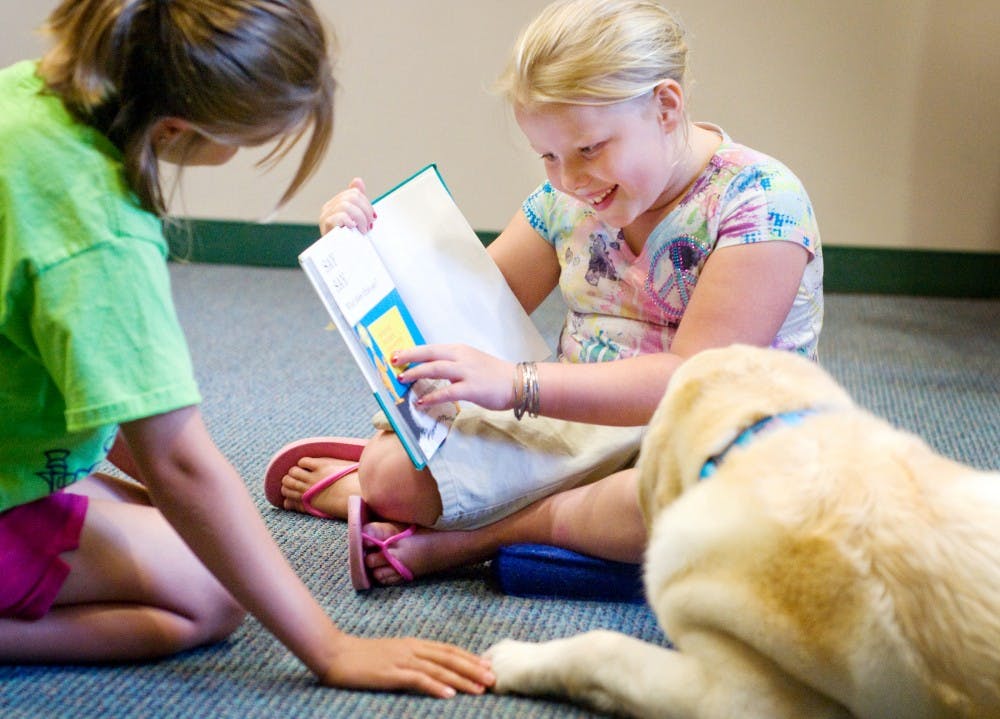When Dash — a 7-year-old golden retriever — retired from being a breeding dog for Paws With A Cause after having four litters, she was not ready to retire fully from helping her community.
Dash’s owner, East Lansing resident Sheila Schimpf, knew Dash was selected to breed for agency because of her calm temperament, and she felt obligated to find a new activity for her companion.
“She’s a very serious dog,” Schimpf said. “She likes to have something to do, so when they retired her and she didn’t have any more puppies, I thought I needed to find something for her to do because she’s that kind of dog.”
Intermountain Therapy Animals is a nonprofit organization that launched the Reading Education Assistance Dogs, or R.E.A.D., program, which helps improve children’s literacy skills by having them read to trained dogs.
For an hour Monday, the East Lansing Public Library welcomed Dash and two other dogs for children to read to. The dogs are registered therapy dogs who have gone through training to serve as literacy mentors for children.
Although it’s not quite like “Martha Calling,” Lezlee Worthington, the children’s services assistant at the library, said children are open to the dogs and read to them in a way they never would to an adult.
“They’re unconditional; dogs aren’t going to judge you,” Worthington said. “Even though they’re amongst people, they act like they aren’t and have this sense that they’re alone with the dog. I think that’s an interesting dynamic.”
Worthington said the library tries to have the event every three months, but it will host dogs twice this summer with the second time on July 27. Parents should sign their children up in advance, and there is usually room for no more than 30 participants.
The dog owners volunteer their time, so the event has no cost to the library. Worthington said the dogs are friendly and comfortable meeting new children, and they’re the kind of dogs people want to own.
Okemos resident Kristin Hicks brought her 8-year-old son Andrew and her 5-year-old daughter Sarah to read to the dogs. They both read to Mason, Mich., resident Mary Mulder’s yellow lab, Lilly. She said she brought her children because reading to dogs encourages reading out loud and creates a positive association with reading.
“I think (Lilly) really liked it because she started wagging her tail at the end of the story,” said Andrew Hicks, who read Dr. Seuss’ “The Big Brag.”
Children read to dogs for a number of reasons, Worthington said. Although generally it’s to help reading skills, some parents bring their children to improve speech impediments or to decrease intimidation by dogs.
Regardless of the reason, dogs’ unconditional love offers room for mistakes and improvements while reading without criticism or corrections.
“We’ve had some students who are learning English as a second language, and they’re older. So it’s embarrassing at school to read out loud,” Mulder said. “But with the dogs, they’ll read all sorts of stories to them, and it helps them learn how to communicate.”
Support student media!
Please consider donating to The State News and help fund the future of journalism.
Discussion
Share and discuss “E.L. library uses dogs to help children read” on social media.







